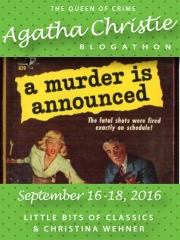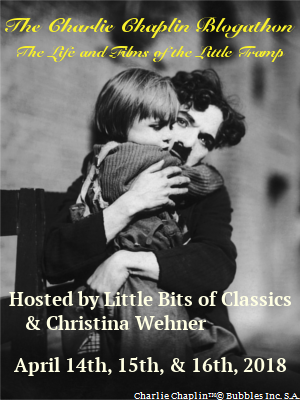 I recently saw the 1942 movie Gentleman Jim, with Errol Flynn as the boxer, James J. Corbett. It was a rip-roaring good movie with an excellent performance from Flynn and full of well enacted boxing matches. I was inspired and set out to find a good biography of the man. However, there are not many biographies written about Corbett, but I finally settled on Armond Fields’ James J. Corbett: A Biography of the Heavyweight Boxing Champion and Popular Theater Headliner, published in 2001. I noticed that many of the books written by Fields were about vaudeville performers from Corbett’s time, like Lillian Russell and Eddie Foy, which puzzled me until I read about the life of Corbett. It turns out that he was nearly as accomplished a vaudevillian as he was a boxer, though perhaps he was more innovative and game-changing as a boxer.
I recently saw the 1942 movie Gentleman Jim, with Errol Flynn as the boxer, James J. Corbett. It was a rip-roaring good movie with an excellent performance from Flynn and full of well enacted boxing matches. I was inspired and set out to find a good biography of the man. However, there are not many biographies written about Corbett, but I finally settled on Armond Fields’ James J. Corbett: A Biography of the Heavyweight Boxing Champion and Popular Theater Headliner, published in 2001. I noticed that many of the books written by Fields were about vaudeville performers from Corbett’s time, like Lillian Russell and Eddie Foy, which puzzled me until I read about the life of Corbett. It turns out that he was nearly as accomplished a vaudevillian as he was a boxer, though perhaps he was more innovative and game-changing as a boxer.
Boxing was not a respectable sport in the eighteen hundreds. In the eyes of polite society, it was more like brawling. Pugilists (which seems to be what professional boxers were called; amateurs were boxers) didn’t wear gloves, rules during the matchs weren’t fixed and often bouts would end in a bloody, brawling mess. People were shocked and boxing was outlawed in many states.
 However, James J. Corbett changed that…or, at least, he helped. He began as an amateur boxer at the Olympic Club in San Francisco (a reputable club for gentleman, though he was only the son of the owner of a livery). He would give exhibitions, though he could not earn money from it, and he would also teach pugilism. However, he really wanted to make a career out of boxing, much to the dismay of his father. His father thought he should be a respectable bank clerk.
However, James J. Corbett changed that…or, at least, he helped. He began as an amateur boxer at the Olympic Club in San Francisco (a reputable club for gentleman, though he was only the son of the owner of a livery). He would give exhibitions, though he could not earn money from it, and he would also teach pugilism. However, he really wanted to make a career out of boxing, much to the dismay of his father. His father thought he should be a respectable bank clerk.
In fact, there were many people who disapproved of his decision to go professional, though he soon laid everyone’s doubts to rest (save his father’s) by defeating the great John L. Sullivan in 1892 to become the heavyweight champion of the world. His family apparently made a killing through various bets on the match. His brother ran a pool room and also handled much of the sports betting transactions in San Francisco and his sisters, brothers, and even his father did very well out of his win.
And right after he become heavyweight champion is when Corbett’s second career began; a career that would actually last far longer than his boxing career. To capitalize on his huge popularity, his manager put him in a play, a play that was more boxing exhibition than actual drama, but Corbett acquitted himself adequately and people flocked to see him, standing room only at all his showings, and he toured the country. He next moved on to another show, this time more of a play than exhibition, and his acting had improved some. He was making far more money acting than he was boxing and he even allowed his championship to lapse by refusing to meet another boxer who had challenged him. He regained his title later, but when he came up against Bob Fitzsimmons, he lost. His family felt it was because he had allowed himself to be distracted by his acting.
 This did not diminish his popularity, however. He seems to have remained all his life a great popular figure. Even his attempts to regain the title when he was past his boxing prime were seen as gallant and endearing. He never completely left boxing behind and his acting steadily improved. His plays become actual plays instead of about boxing and he was taken seriously as a performer, always to sold out crowds.
This did not diminish his popularity, however. He seems to have remained all his life a great popular figure. Even his attempts to regain the title when he was past his boxing prime were seen as gallant and endearing. He never completely left boxing behind and his acting steadily improved. His plays become actual plays instead of about boxing and he was taken seriously as a performer, always to sold out crowds.
Fields shows how Corbett demonstrated a remarkable ability to move with the times. Earning money always seems to have been a prime object with Corbett and he did quite well at it. Not only did he act in plays, but he became quite adept on vaudeville. Many boxers seem to have done two things after they were done boxing: open a saloon and turn to vaudeville. Corbett was unique in that he was actually successful at both, though he sold his saloon to focus on acting. He began by giving boxing exhibitions and also started talking about boxing on stage, doing what is called monologues. Monologuing was an art form and he was quite good at it. He had a friendly, down-to-earth style and would talk about boxing, his experiences acting, his travels, even his appendectomy and stay in the hospital and when the vaudeville tours he was with were reviewed, he was always mentioned approvingly.
Later, he was part of several comedy teams, playing the straight man reacting to the antics of the other and he was considered one of the best in the business. He also made several silent movies. An interesting bit that Fields also brought out was how the heyday of vaudeville was in the early nineteen hundreds but was essentially killed, during Corbett’s lifetime and all vaudevillians knew it was coming, by the advent of silent pictures. Vaudeville had begun as one of the only ways for working class men to entertain themselves (the rich went to operas and plays and concerts), but movies took their place. Musicals (such as those written by Irving Berlin and Jerome Kern) also became big in the ’20s.
 James J. Corbett seems largely forgotten today, but Fields shows he really was important in both vaudeville and boxing. He helped make both respectable. Women and the upper classes did not attend either, but with his all-American, friendly, pleasant and dapper persona, he was a reassuring presence in both areas and soon boxing and vaudeville gained a much wider audience because of him. He is also considered one of the first scientific boxers, using art and good footwork instead of simply charging in and swinging, relying on brute force.
James J. Corbett seems largely forgotten today, but Fields shows he really was important in both vaudeville and boxing. He helped make both respectable. Women and the upper classes did not attend either, but with his all-American, friendly, pleasant and dapper persona, he was a reassuring presence in both areas and soon boxing and vaudeville gained a much wider audience because of him. He is also considered one of the first scientific boxers, using art and good footwork instead of simply charging in and swinging, relying on brute force.
Fields also fills the biography with fascinating facts. For example, whenever someone wanted to arrange a boxing match, there was the inevitable problem of trying to find a legal location in which to hold the match. As soon as a city was selected then the governor would come out against it, some churches and societies would protest, and lawmakers would move to prevent it, though the city council would usually want it because they felt it would bring in revenue. One governor even threatened to send the militia to stop the match and Corbett and his opponent must have tried at least three different cities before finding one, though the governor did send the militia. The militia ending up hanging around and were never called on, however.
Boxers were perpetually being arrested for participating or intending to participate in the illegal sport. Boxing was like a quasi legal sport, subject to the vicissitudes of state and city. Once, the managers of several boxers got involved and helped get lawmakers to pass legislation so it would be legal to have their match.
The book was very engaging and gave a wonderful sense of the times from the 1890s-1920s, describing both the boxing matches and his vaudeville performances, and Fields shows how Corbett was almost a hero in his era, always respected, who gave a good deal of respectability to everything he participated in.
In 1894, Corbett and boxer Peter Courtney participated in a six round bout that was filmed by one of Edison’s kinetographs (early movie camera). It was only the second boxing match ever filmed, though it is not a proper match. They only had film for 6 rounds, so the match was somewhat staged and there was no doubt Corbett was going to win, though he wasn’t supposed to win too soon. Corbett is the man in the very short shorts, which apparently were often worn by boxers in those days, though I am glad they don’t wear them anymore. Courtney is in the tights.







FictionFan
August 29, 2014 at 8:19 pm
Fascinating review! My father was a good amateur boxer in the 1940s and Gentleman Jim Corbett was one of his great heroes. He wasn’t old enough to ever have seen him live, of course, but apparently his techniques were still taught when my Dad was training, and Dad considered him to be the man who turned boxing into a sport of skill and art rather than merely a fist-fight. If memory serves me right, he was a ‘southpaw’ – left-handed – which my Dad felt gave him an edge. Haha! You can probably tell how much my father must have liked him if I can still remember all this umpty years later – thanks for taking me down memory lane! 🙂
LikeLike
christinawehner
August 29, 2014 at 8:48 pm
Wow, what great memories from your dad! I didn’t realize Corbett was left-handed. I sadly had never heard of Corbett before several months ago and it is exciting to know that his influence and memory extend far beyond what I knew and that he is not forgotten!
LikeLike